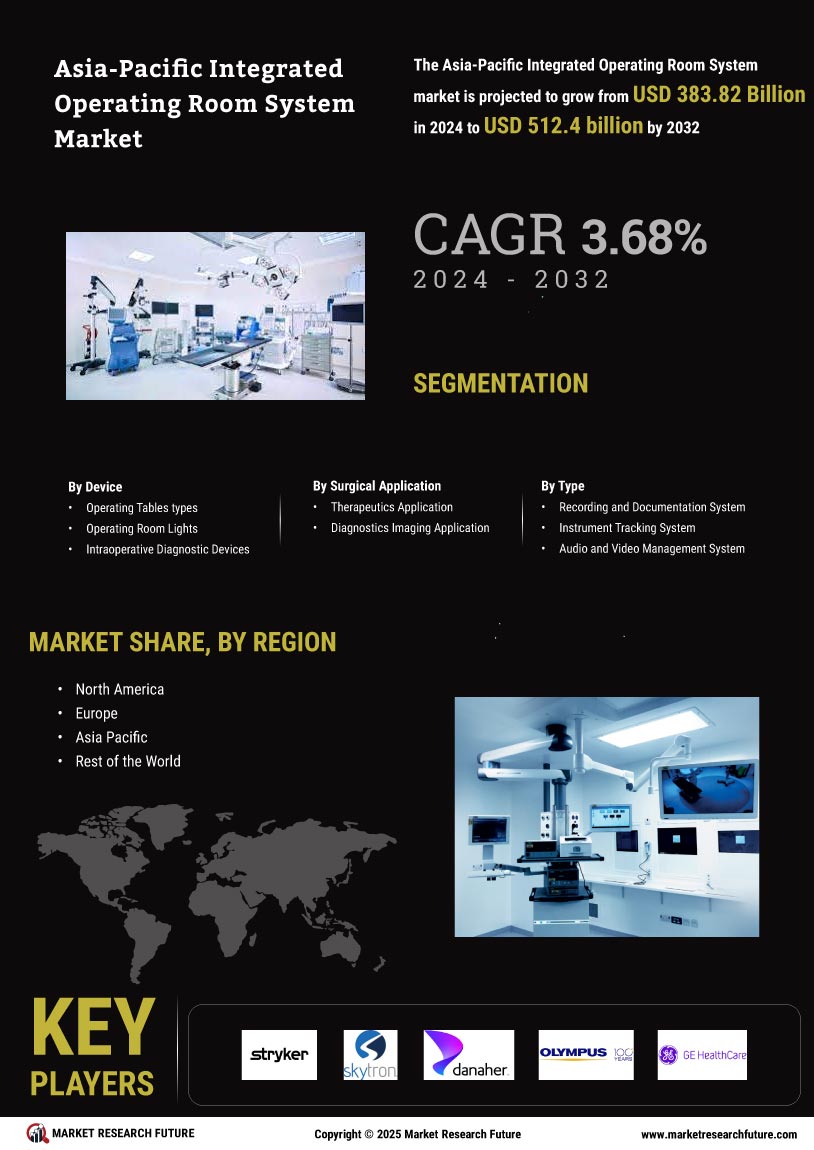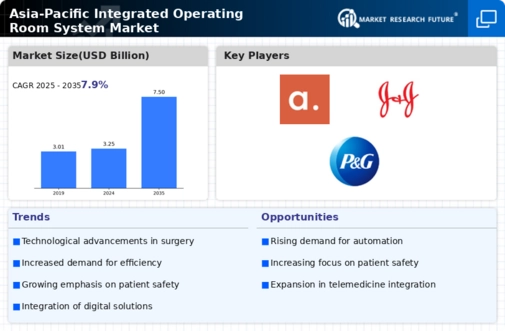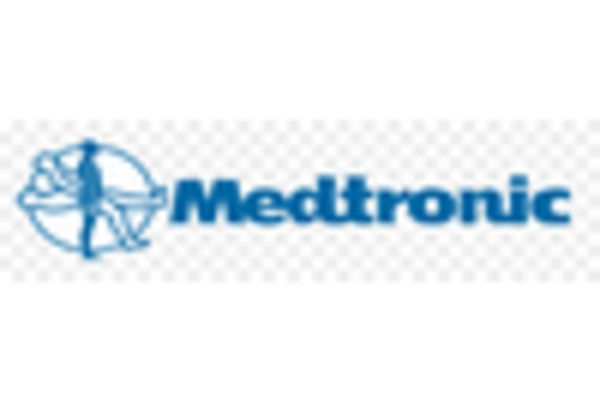Growing Aging Population
The demographic shift towards an aging population in the Asia-Pacific region is a critical driver for the Integrated Operating Room System Market. As the elderly population increases, so does the prevalence of age-related health issues requiring surgical intervention. This demographic trend is prompting healthcare systems to adapt by enhancing their surgical capabilities through integrated operating room systems. The market is likely to expand in response to this growing demand, with projections indicating a potential growth rate of 11% as healthcare providers strive to meet the needs of an aging populace.
Technological Integration
The Asia-Pacific Integrated Operating Room System Market is experiencing a surge in technological integration, driven by advancements in surgical equipment and digital solutions. The incorporation of robotics, artificial intelligence, and telemedicine into operating rooms enhances surgical precision and efficiency. As hospitals increasingly adopt these technologies, the market is projected to grow at a compound annual growth rate (CAGR) of approximately 12% over the next five years. This integration not only streamlines surgical workflows but also improves patient outcomes, making it a pivotal driver in the region's healthcare landscape.
Government Initiatives and Funding
Government initiatives aimed at enhancing healthcare infrastructure are significantly influencing the Asia-Pacific Integrated Operating Room System Market. Various countries in the region are allocating substantial budgets to modernize healthcare facilities, which includes the procurement of integrated operating room systems. For instance, recent reports indicate that several governments are investing in public-private partnerships to improve surgical services. This influx of funding is likely to bolster the market, as hospitals upgrade their operating rooms to meet new standards and improve patient care, potentially resulting in a market growth trajectory of 8% per year.
Increased Focus on Surgical Efficiency
The Asia-Pacific Integrated Operating Room System Market is increasingly characterized by a focus on surgical efficiency. Hospitals are under pressure to optimize their operating room utilization and reduce costs while maintaining high standards of care. Integrated operating room systems facilitate better coordination among surgical teams, leading to shorter procedure times and improved patient throughput. This emphasis on efficiency is driving hospitals to invest in integrated solutions, which are expected to enhance operational performance. As a result, the market may see a growth rate of approximately 9% as healthcare providers seek to maximize their resources.
Rising Demand for Minimally Invasive Surgery
The Asia-Pacific Integrated Operating Room System Market is witnessing a notable increase in the demand for minimally invasive surgical procedures. Patients and healthcare providers alike are gravitating towards these techniques due to their associated benefits, such as reduced recovery times and lower risk of complications. This trend is reflected in the growing number of surgical procedures performed using integrated operating room systems, which are designed to facilitate such operations. The market is expected to expand as hospitals invest in advanced technologies that support minimally invasive approaches, potentially leading to a market growth rate of around 10% annually.


















Leave a Comment